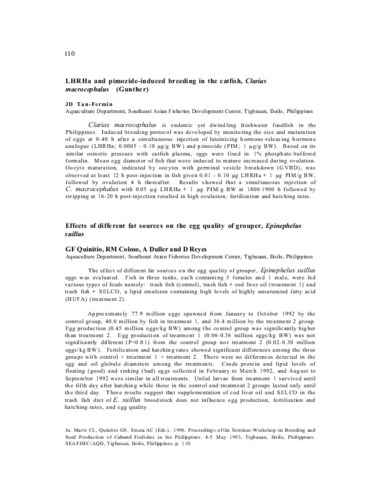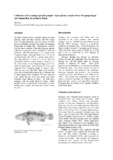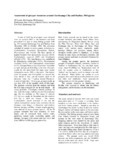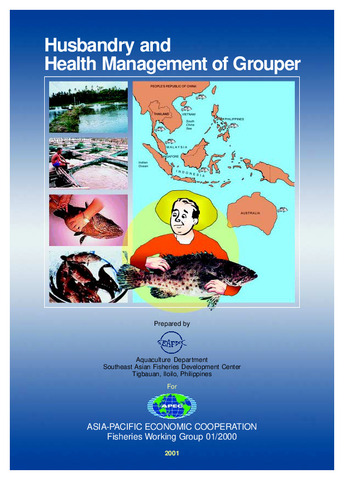Effects of different fat sources on the egg quality of grouper, Epinephelus suillus
- Global styles
- MLA
- Vancouver
- Elsevier - Harvard
- APA
- Help

Date
1996Page views
6,070ASFA keyword
AGROVOC keyword
Taxonomic term
Metadata
Show full item record
Share
Abstract
The effect of different fat sources on the egg quality of grouper, Epinephelus suillus eggs was evaluated. Fish in three tanks, each containing 3 females and 1 male, were fed various types of feeds namely: trash fish (control), trash fish + cod liver oil (treatment 1) and trash fish + SELCO, a lipid emulsion containing high levels of highly unsaturated fatty acid (HUFA) (treatment 2).
Approximately 77.9 million eggs spawned from January to October 1992 by the control group, 40.0 million by fish in treatment 1, and 36.4 million by the treatment 2 group. Egg production (0.45 million eggs/kg BW) among the control group was significantly higher than treatment 2. Egg production of treatment 1 (0.06-0.36 million eggs/kg BW) was not significantly different (P<0.01) from the control group nor treatment 2 (0.02-0.30 million eggs/kg BW). Fertilization and hatching rates showed significant differences among the three groups with control > treatment 1 > treatment 2. There were no differences detected in the egg and oil globule diameters among the treatments. Crude protein and lipid levels of floating (good) and sinking (bad) eggs collected in February to March 1992, and August to September 1992 were similar in all treatments. Unfed larvae from treatment 1 survived until the fifth day after hatching while those in the control and treatment 2 groups lasted only until the third day. These results suggest that supplementation of cod liver oil and SELCO in the trash fish diet of E. suillus broodstock does not influence egg production, fertilization and hatching rates, and egg quality.
Description
Abstract only.
Suggested Citation
Quinitio, G. F., Coloso, R. M., Duller, A., & Reyes, D. (1996). Effects of different fat sources on the egg quality of grouper, Epinephelus suillus. In C. L. Marte, G. F. Quinitio, & A. C. Emata (Eds.), Proceedings of the Seminar-Workshop on Breeding and Seed Production of Cultured Finfishes in the Philippines, Tigbauan, Iloilo, Philippines, 4-5 May 1993 (p. 110). Tigbauan, Iloilo, Philippines: Aquaculture Department, Southeast Asian Fisheries Development Center.
Type
Conference paperISBN
9718511326
Related items
Showing items related by title, author, creator and subject.
-
Collection of the orange-spotted grouper Epinephelus coioides from Tinagong Dagat and Sapian Bay in northern Panay
Solis, Noel B. (Bureau of Agricultural Research, Department of Agriculture, 2007)In Capiz, northern Panay, grouper catches by hand picking, hook and line, shelters, and fish corral were low throughout the year, on average 1-3 fish from each fishing operation, but higher in Tinagong Dagat than in Sapian ... -
Assessment of grouper resources around Zamboanga City and Basilan, Philippines
Lasola, N. T.; Samson, R. A.; Domingo, P. B. (Bureau of Agricultural Research, Department of Agriculture, 2007)A total of 2,643 kg of groupers were collected from six markets (96% of the biomass) and from prescribed fish traps in three fishing grounds (106 kg, 4%) around Zamboanga City and Basilan from November 1993 to October 1994. ... -
Husbandry and health management of grouper
Asia-Pacific Economic Cooperation; Southeast Asian Fisheries Development Center (Asia-Pacific Economic Cooperation; Aquaculture Department, Southeast Asian Fisheries Development Center, 2001)The groupers (Family Serranidae) are among the most popular species in the live reef food fish industry in the Asia-Pacific region. Groupers are generally fast growing, hardy, suitable for intensive culture, and with ...






